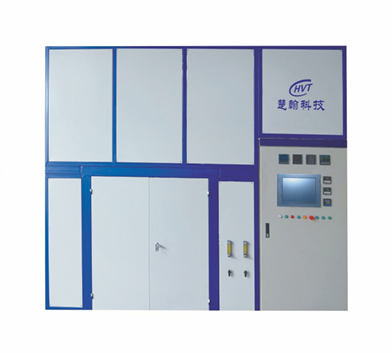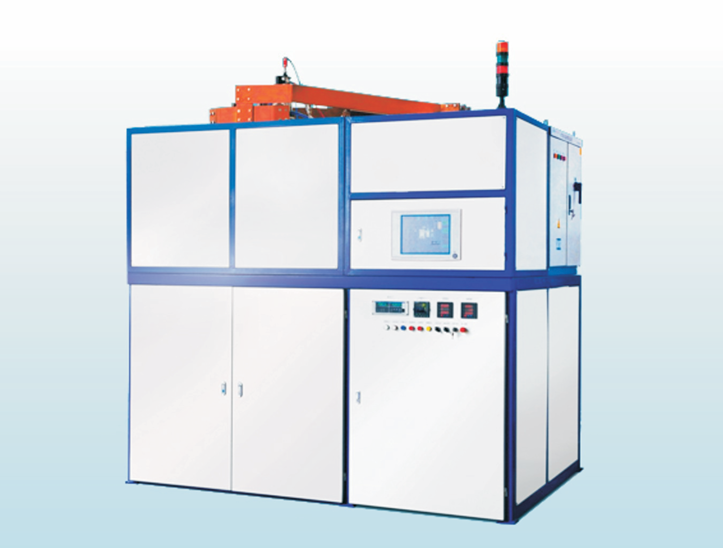Precise Temperature Control for Optimized Metalworking
Knowing how melting furnaces keep their precision matters a lot in metalworking shops everywhere. Induction melting furnaces work by sending alternating current through coils to create a magnetic field that actually heats up the metal itself. What makes this setup so good is that it allows fast and accurate temperature changes, which is really important when making high quality products. Modern systems come with built-in sensors that watch what's happening inside all the time, cutting down on temperature swings and making everything more consistent. These improvements mean there's much less chance of things getting too hot, which keeps the melted metal uniform and improves the finished goods. For manufacturers, the precise control these furnaces offer means they can work faster while still saving materials and producing parts that last longer without defects.
Core Technology: How Induction Melting Furnaces Maintain Accuracy
Induction melting furnaces play a key role in managing temperatures precisely during metalworking operations because they work on the principle of electromagnetic induction. As alternating current flows through those copper coils surrounding the crucible, a magnetic field gets created which then generates heat right inside the metal itself. What makes these furnaces so effective is how quickly and accurately they can regulate temperature, making the whole melting process much smoother compared to older methods. Modern versions come with all sorts of fancy sensors that keep track of everything in real time, keeping temperature swings to a minimum and ensuring the melt stays stable throughout. The result? Less chance of overheating materials and far more consistency between batches. Manufacturers really appreciate this kind of control since it leads to better quality end products across the board.
Impact on Metal Grain Structure and Alloy Integrity
Getting the temperature just right when melting metal makes a big difference in how the grains form and what kind of alloys we end up with. Metal that melts at controlled temps tends to have a much more uniform grain structure, which actually makes the metal stronger and more flexible overall. Studies show that keeping track of exact temperature changes throughout the process really matters for getting good strength and flexibility out of alloys, something manufacturers need for parts that will perform well in real world situations. Controlling heat while melting lets us tweak the physical characteristics of cast metals so they work better for whatever application they're going into. The whole metal casting industry relies on this careful temperature management to keep alloys intact and produce high quality metal goods across different sectors.

Operational Efficiency and Cost Benefits of Melting Furnaces
Induction melting furnaces save energy because they only need what's necessary to reach the right melting temp. Companies that switched to these systems often see their energy bills drop around 30% compared to older furnace models. Another plus point is their smaller footprint which means less heat escapes while things are heating up. The money saved on electricity isn't just good for the bottom line either. Many manufacturers find these furnaces fit well with green initiatives without sacrificing production quality. For shops looking at long term savings and wanting to reduce their environmental impact, induction melting makes sense both financially and environmentally.
Accelerated Melt Cycles for Increased Production Throughput
Induction melting furnaces melt metals much quicker compared to traditional techniques, cutting down on cycle times and boosting overall production efficiency. When factories start running these fast melt cycles, output goes up significantly. This means more products getting made per day, which naturally leads to better profits and happier customers who receive their orders on time. The speed advantage helps manufacturers keep up with changing market conditions while still maintaining product quality standards, giving them an edge over competitors stuck with slower processes. Companies that fine tune their melting operations find themselves able to respond to client requests faster and scale up production when needed, something many shop floor managers consider essential for staying ahead in today's tight manufacturing landscape.
Lower Maintenance Requirements Versus Traditional Furnaces
Induction melting furnaces come with fewer moving parts compared to conventional models, which means they need less maintenance and spend less time offline for repairs. Factory workers who run these systems regularly report that induction units often last much longer than older melting technologies before needing replacement parts. This kind of reliability makes a real difference in day-to-day operations. When production lines keep running smoothly without unexpected breakdowns, companies save money across multiple departments. For metal processors looking at their bottom line, the combination of lower repair bills and longer equipment life makes induction furnaces worth the initial investment. Many shops in the steel and aluminum industries have switched to this technology simply because it pays for itself over years of continuous operation.
Superior Melt Quality Through Contamination Prevention
Controlled atmosphere furnaces really cut down on oxidation while metals are melting, which means better quality molten metal comes out at the end. These furnaces create a shield around the metal so it doesn't react with oxygen or other stuff in the air that can mess up the alloy properties we want. Studies have actually shown that using oxidation inhibitors in these setups can make the finished product last much longer without breaking down. The result? Much cleaner melts that work great in places where getting things right matters most, like aircraft manufacturing and military equipment production. Some shops even swear by this tech because they just don't see those surface defects anymore after switching to controlled atmospheres.
Minimizing Slag Formation and Elemental Loss
Today's melting furnaces work hard to cut down on slag formation because when metal gets contaminated, it just isn't pure anymore. These newer furnace models come packed with special features that go after those pesky elements responsible for creating all that unwanted slag. What does this mean? Cleaner melts that actually work well for making top notch alloys. Research shows that when there's less slag floating around, factories see better yields from their batches. And better yields mean saving money on materials over time. For anyone running a manufacturing operation, getting this right matters a lot since nobody wants to pay extra for inferior product quality while trying to keep costs under control.
Achieving Consistent Alloy Composition
Getting tight control over the melting process matters a lot when it comes to keeping the alloy composition consistent during production runs. When manufacturers get this right, the mechanical properties stay within expected ranges, which makes products reliable no matter where they end up being used - think cars, electronics, even aerospace components. Looking at industry data, businesses that invest in modern melting furnaces see fewer problems with composition variations. That means customers can count on what they buy, which builds trust over time. For metalworking shops, precise temperature management isn't just some technical detail about quality control. It's actually crucial for retaining long term business partnerships because nobody wants to deal with unpredictable materials when their own products are on the line.
Versatility Across Metalworking Applications
Induction melting furnaces are changing the game in foundry work, especially when making complicated parts. These furnaces keep temperatures just right, which matters a lot for getting those fine details right and keeping the structure strong in what gets cast. Real world tests show that shops switching to induction melting see better results, especially with tricky shapes that used to be hard to get right. Foundries that adopt this tech end up producing parts that are not only more consistent but also showcase finer details than traditional methods allow. For many manufacturers dealing with complex designs, this means fewer rejects and happier customers who notice the difference in quality.
Forging Preparation: Precise Billet Heating
Induction melting furnaces really shine when it comes to how fast they heat things up, something that matters a lot for getting billets just right before forging starts. Research from several manufacturers indicates that when materials are heated evenly, there's less force needed during the actual forging process, which means faster production times overall. What's interesting too is that these controlled heating conditions actually change the material at a microscopic level. The grains get smaller and more uniform, leading to parts that can handle stress better than those made with other methods. For shops looking to cut costs, this kind of precision pays off in multiple ways. Better quality products come out of the forge, and there's simply less scrap material wasted because everything works smoother from start to finish.
Metal Recycling: Efficient Scrap Processing
Induction melting systems play a big role in the recycling business because they work so well when it comes to handling scrap materials. When we look at how much energy these furnaces actually consume compared to older techniques, the numbers tell a clear story - induction systems cut down on power consumption during metal recycling operations. The fact that they save energy is great news for anyone concerned about going green, since recycled metals produced this way still hit all the necessary quality marks for being put back into circulation. Switching to induction melting means companies can save money while doing less harm to the environment, which fits right into today's push for greener manufacturing across industries.
Environmental and Safety Advantages
Switching to induction melting furnaces cuts down on carbon emissions when compared to old school fuel burning systems. According to recent industry data from metal manufacturing associations, factories that switch over to induction tech often see their greenhouse gas output drop around half. These kinds of reductions do more than just tick boxes for sustainability goals they actually show real world progress toward environmental accountability. For manufacturers looking at long term costs, moving away from traditional methods makes both ecological and economic sense since induction systems tend to be more efficient overall while helping businesses stay ahead of tightening regulations around emissions standards.
Safer Working Conditions with Electromagnetic Stirring
Modern induction melting furnaces come with electromagnetic stirring built right in, which helps mix the molten metal much better than older methods. This means the metal stays consistent throughout and there's less chance of dangerous hot spots forming in certain areas. From a practical standpoint, this tech makes a real difference in day to day operations. The workplace becomes noticeably safer for people working around the furnace, and we've seen accident rates drop off quite a bit. According to industry reports from several manufacturing plants across different regions, companies that upgraded to these systems saw incident numbers fall by around 30% on average over two years. These improvements don't just look good on paper either they actually make workplaces healthier places where employees feel more secure doing their jobs.
Compliance with Industrial Sustainability Standards
When manufacturers adopt induction melting tech, they usually exceed standard sustainability benchmarks and get ahead on environmental regulations. The process runs on energy that can be recycled multiple times, which helps companies hit those green goals faster. Getting certified for these standards does more than just look good on paper it actually creates access points into markets where customers care deeply about sustainability. Factories that stick to strict environmental guidelines show they mean business when it comes to planet friendly practices, and this kind of reputation opens doors to contracts and partnerships in industries where going green isn't just trendy anymore.
FAQs
What is the main advantage of using induction melting furnaces?
Induction melting furnaces offer precise temperature control, efficient energy consumption, and enhanced production throughput, making them an excellent choice for metalworking applications.
How do induction melting furnaces reduce energy consumption?
These furnaces utilize only essential power to achieve desired melting temperatures and minimize energy loss with a compact design, which can lead to up to 30% reduction in energy costs.
Are there environmental benefits to using induction melting furnaces?
Yes, induction melting furnaces significantly reduce carbon emissions compared to traditional methods, aligning with global sustainability efforts and supporting eco-friendly practices.
What impact does precise temperature control have on metals?
Precise temperature control enhances the grain structure and mechanical properties of metals, ensuring uniformity, strength, and ductility, which are crucial for high-quality alloy integrity.
How do induction melting furnaces improve safety?
By incorporating electromagnetic stirring, induction furnaces enhance uniformity in molten metal, reduce hot spots, and create safer working conditions for operators.
Table of Contents
-
Precise Temperature Control for Optimized Metalworking
- Core Technology: How Induction Melting Furnaces Maintain Accuracy
- Impact on Metal Grain Structure and Alloy Integrity
- Operational Efficiency and Cost Benefits of Melting Furnaces
- Accelerated Melt Cycles for Increased Production Throughput
- Lower Maintenance Requirements Versus Traditional Furnaces
- Superior Melt Quality Through Contamination Prevention
- Minimizing Slag Formation and Elemental Loss
- Achieving Consistent Alloy Composition
- Versatility Across Metalworking Applications
- Forging Preparation: Precise Billet Heating
- Metal Recycling: Efficient Scrap Processing
- Environmental and Safety Advantages
- Safer Working Conditions with Electromagnetic Stirring
- Compliance with Industrial Sustainability Standards
-
FAQs
- What is the main advantage of using induction melting furnaces?
- How do induction melting furnaces reduce energy consumption?
- Are there environmental benefits to using induction melting furnaces?
- What impact does precise temperature control have on metals?
- How do induction melting furnaces improve safety?


